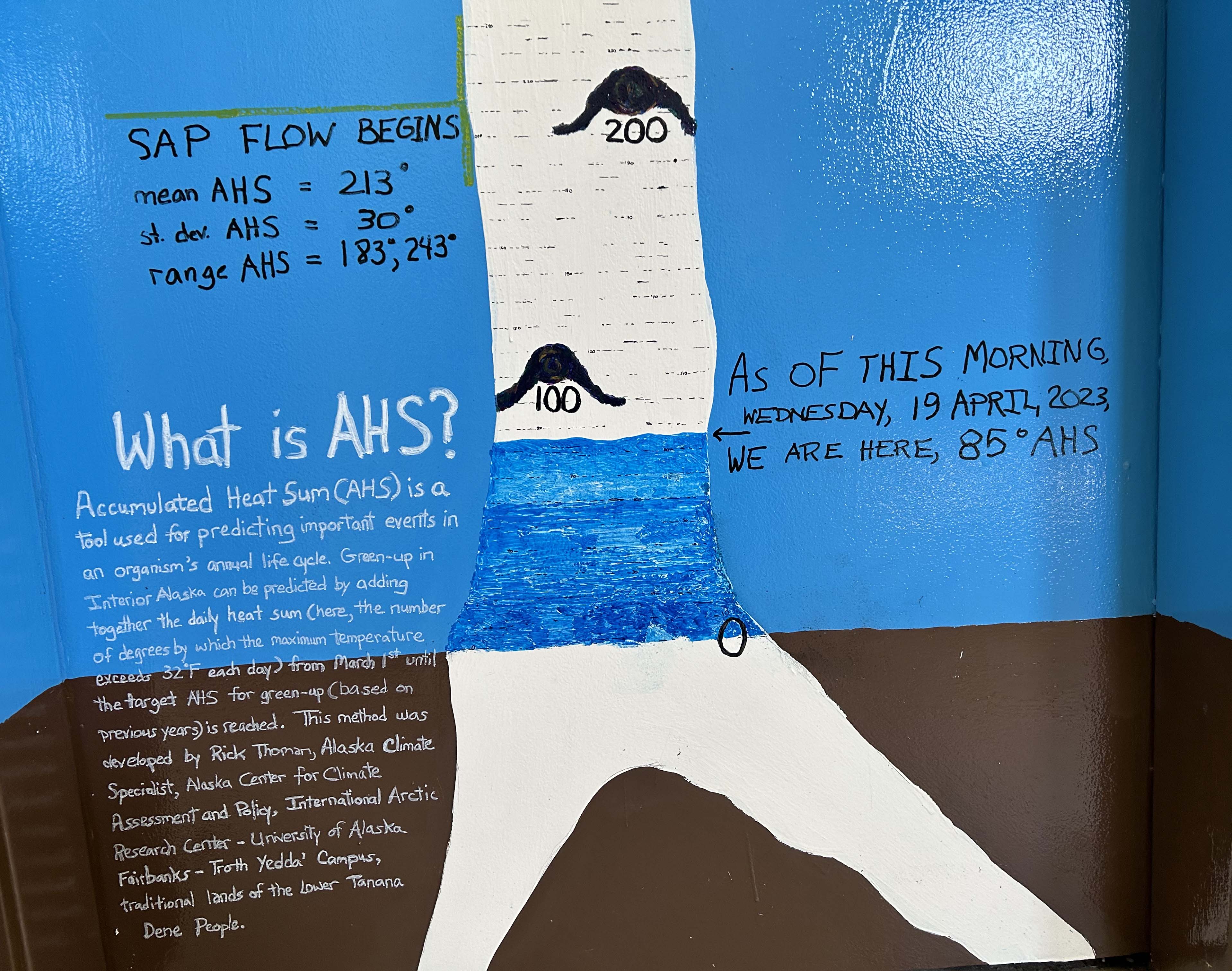Phenology

The Generation OneTree Long-Term Ecological Monitoring research plot is located along the trail system on the University of Alaska Fairbanks campus, in an area known as the T-Field. To protect the trees, a 10-foot-high moose- and snowshoe hare-proof fence surrounds the plot.
The saplings were grown during the winter of 2010-11 in a growth chamber in the Institute of Arctic Biology research greenhouse on campus from seeds collected during harvest operations for a wood milling study. We know a fair bit about the eight maternal trees from which the 144 seedlings in the research plot arose: The characteristics of the progeny can tell us a lot about the genetic diversity and resilience of our local birch resource because the seedlings were reared to simulate the lengthening growing season in Interior Alaska. The season lengths were: three months (pre-1976 mean length), four (“normal” current conditions) and five-month growing seasons (four of previous 10 years). We tested this to see how the initial growing season length affects long-term tree growth.
An Introductory Ecology class from UAF used the plot for a lab. They found that the saplings that spent three months in the growth chamber had a shrubby appearance with multiple main stems and branching primarily within the bottom third of the sapling's overall height.
In contrast, the group of seedlings that spent five months in the growth chamber looked like mature trees: The predominant branching occurred in the middle third of the tree, with the bottom branches having been shed.
This correlates with initial observations in the growth chamber: the five-month group completed two full growing seasons before being placed into the dormancy conditions that heralded the end of their first year of growth.

